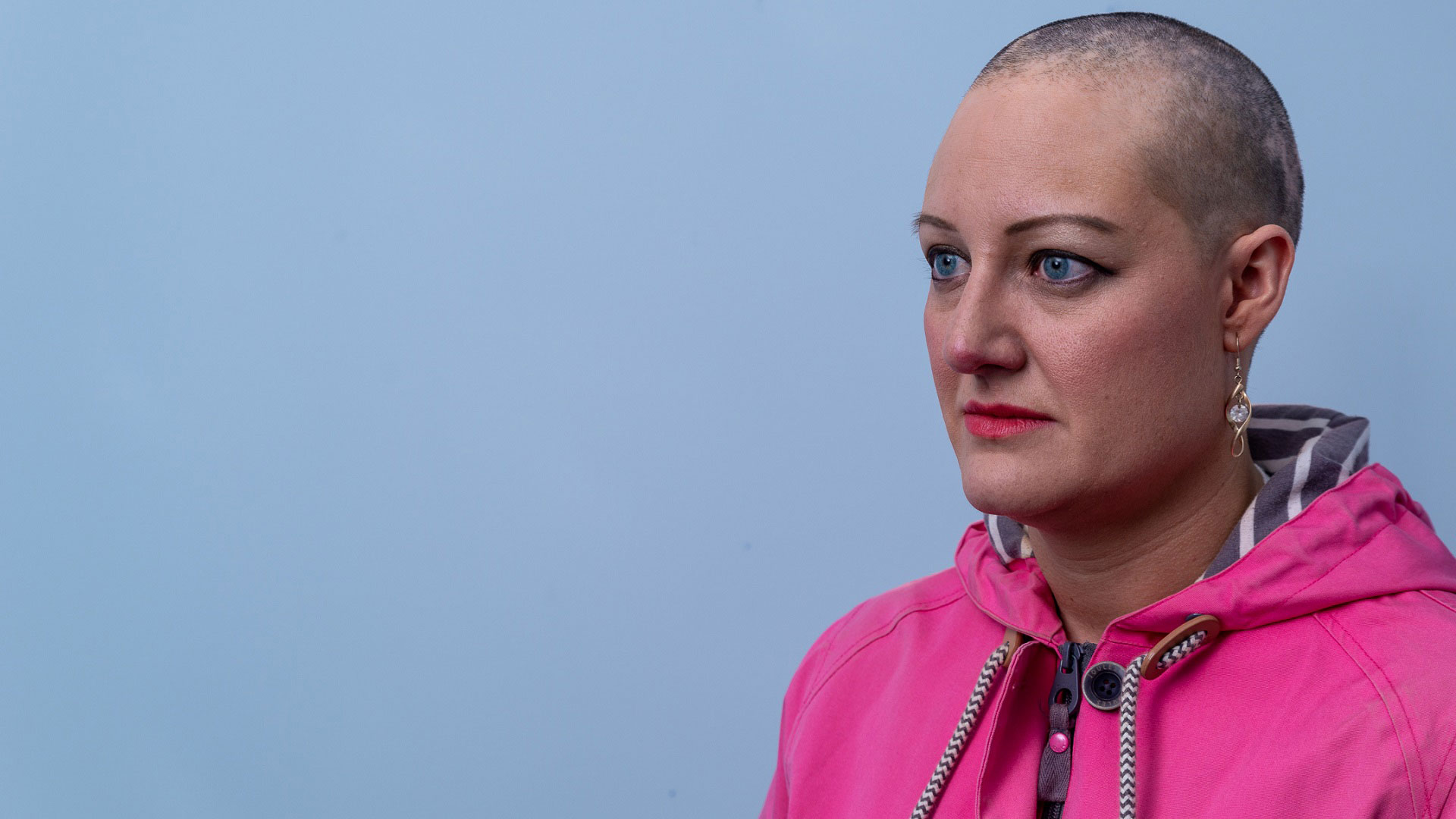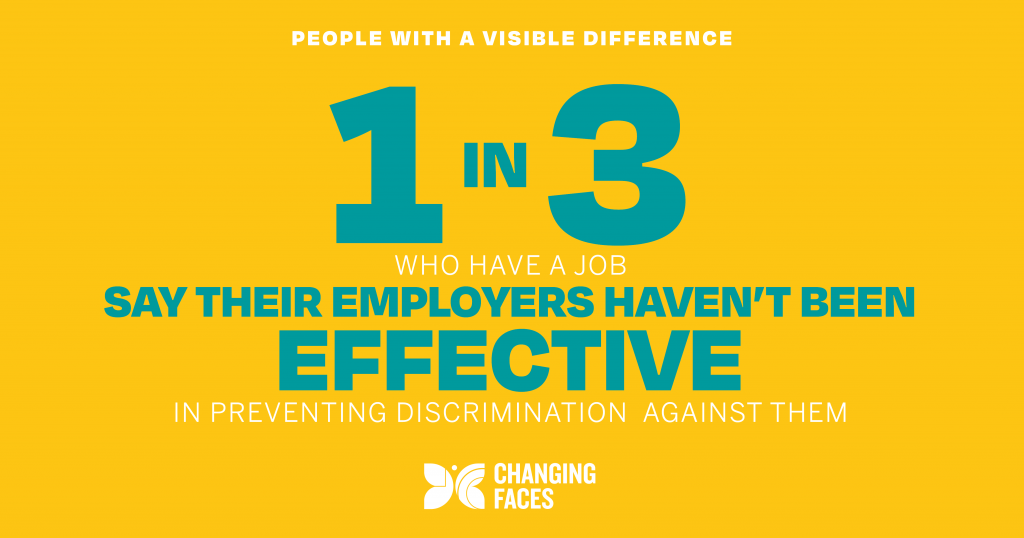Nirjeet’s story
Nirjeet has experienced unwanted assumptions and judgments because of his vitiligo, but now he’s on a mission for acceptance.

We explore how people with a visible difference can experience discrimination due to their appearance and what can be done about it.
We all have the right to be treated fairly, equally and with respect. Yet many people regularly face appearance-related discrimination.
We are exposed to many images and messages in our society which link “good looks” to success or emphasise physical “perfection”. This can make you feel excluded and ignored if you have a visible difference. It can also highlight your difference to others. Disadvantage and stigma can be experienced in many ways, from prolonged staring to inquisitive questions, ridicule, and being overlooked.
On this page, we explain what appearance-related discrimination is, what you can do about it and how Changing Faces is working to prevent discrimination based on physical appearance.
Discrimination is when a person is treated unfairly because of certain characteristics, such as race, age, gender or sexual orientation. So, appearance-related discrimination is treating a person unfairly because of how they look.
It is also possible for people to experience discrimination because they fall into several categories. For example, a black person with a visible difference could experience discrimination because of their race or their appearance, or a combination of the two. This is called intersectional discrimination and can put people at even more of a disadvantage.
This video highlights some of the many forms of discrimination people with a visible difference may experience – from being ignored by brands to being sidelined in the workplace:
We are taught at an early age to categorise things, for example, colours, sizes and gender. While this is part of understanding our world, we sometimes give values to these categories, which are often learned from those around us.
This is where discrimination often stems from – the notion that a particular characteristic has more value than another. For example, the idea that “traditionally attractive” people are more sociable and successful.
Of course, there are other reasons why discrimination occurs, although none can be justified. Sometimes it stems from ignorance. Other times, it may be insecurity that causes a person to behave in a way that puts others down.
Sadly, it all-too-common. According to our research, of those with a visible difference:
See our real stories for examples of our clients and supporters who have experienced discrimination and stigma due to their appearance.
Nirjeet has experienced unwanted assumptions and judgments because of his vitiligo, but now he’s on a mission for acceptance.
Kaylin shares her hate-related experiences to encourage others to join Changing Faces in challenging unacceptable behaviours.
Phil experienced abuse and name calling because of his birthmark. He wants people to know that this kind of abuse is a hate crime.
There are four main types of discrimination that are recognised by law.
This includes being turned down at a job interview because the employer says “you wouldn’t fit in”.
This generally applies to rules or policies that are created for everyone but could put you at a disadvantage because of your visible difference. For example, a uniform policy is introduced at work to standardise what everyone wears but the uniform makes it harder for you to carry out your role or may make your visible difference more noticeable to others.

This is where someone behaves in a way that you find hurtful, offensive, humiliating or intimidating. The unwanted behaviour can range from a facial expression or gesture to spoken or written words and images. Excluding someone (not inviting them to meetings or events) is another example.
If you have experienced harassment, this could also be classified hate incident or even a hate crime. You may also find our page on how to manage challenges at work useful.
This is when you are treated unfairly because you have either complained about experiencing discrimination based on your physical appearance or have supported someone else who has been discriminated against.
There is also what is known as unconscious bias. This is where, without being aware of it, someone associates stereotypes with a person or group. This association affects how they interact and feel about the person or group.
Take a look at this video about unconscious bias and visit our dedicated unconscious bias page to learn more:
While no one with a visible difference welcomes discrimination based on their physical appearance, some see it almost as inevitable. Many who experience discrimination do not report it.
Our advice and guidance section contains a range of information for people with a visible difference or parents who have a child with a visible difference, including:
The Equality Act 2010 protects nine characteristics from discrimination. Disability is one of them. A “severe disfigurement” is classed as a disability and is therefore protected by law. But the definition is vague and many people with a visible difference would not define themselves as disabled.
If you have a visible difference, it is wise to understand the legislation, so you know whether the law applies to you and what your rights are.
When it comes to hate incidents and hate crimes, the law applies a wider definition of the term disability. It can also be applied if the view is that the person committing the crime perceives you to have a disability. The police encourage everyone to report all hate incidents and hate crimes, either direct or using a third-party reporting centre, so they can understand the experiences of different communities.
When you face discrimination based on your physical appearance, you may also be experiencing a hate crime or hate incident. Read our advice on what to do if you experience abuse or harassment and when and how to report this to the police.
There are many ways you can support our work to end discrimination based on physical appearance:
Whether or not you have a visible difference, if you’re a parent or carer, you can help tackle discrimination by introducing your children to the idea of difference from an early age. Our resources pack lists books, TV and film and toys which explore visible difference and disfigurement, challenging myths and stereotypes about those of us who look different.
Here at Changing Faces we work to end discrimination and prejudice faced by those who look different. We want a society that values and respects everyone, regardless of how they look.
We run national campaigns to highlight the discrimination and prejudices that many people with a visible difference experience, including hate crime and abuse.
If you have a visible difference you have probably noticed the lack of representation of people who look different in the media. Films and TV shows often maintain the stereotype that being “beautiful” means being “good”. Heroes are usually cast as “traditionally attractive” while “baddies” have scars or some other form of disfigurement.
Through our corporate partnerships, we have worked with businesses like Avon to increase the representation of people with a visible difference in their advertising and marketing campaigns.
Working with the visible difference community, we aim to influence government and opinion formers to drive changes that benefit people with a visible difference. We worked with the British Film Institute, who now commit to not having negative representation depicted through scars or facial difference in the films they fund.
We know from our research that many instances of discrimination based on physical appearance occur in schools, youth groups and workplaces. We have therefore produced:
Whether you have experienced discrimination or not, Changing Faces can also help if you would like emotional support. We can explore the different ways to help you cope with your visible difference and the impact it has on your life. Find out about our Support and Information Line and how to get in touch.
Visible difference can present extra challenges at work. We explore unconscious bias, discrimination and other hurdles.
Find out about the abuse faced by many people with a visible difference – and explore how you can get involved in our Visible Hate campaign.
If you have experienced abuse or harassment due to your visible difference this could be a hate crime. We explain what this means and how to report it to the police.